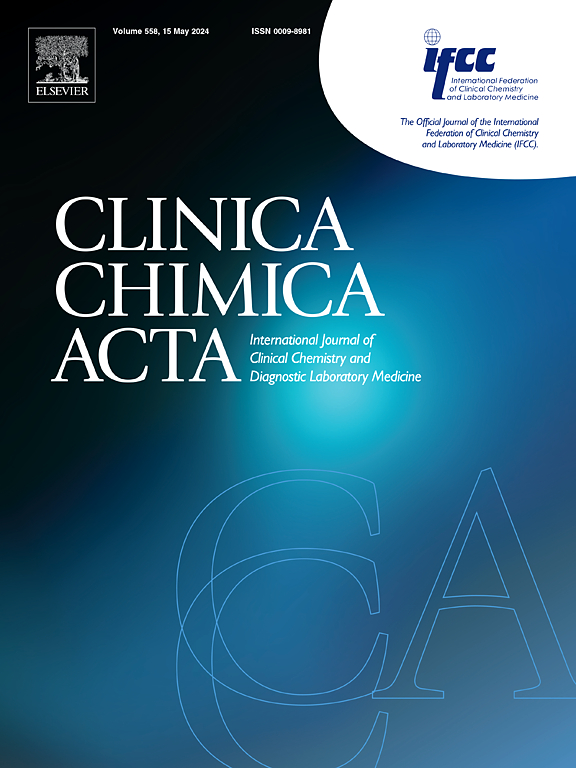Precision diagnostics for psychotic major depression: Construction and validation of a clinical indicator-based model
IF 3.2
3区 医学
Q2 MEDICAL LABORATORY TECHNOLOGY
引用次数: 0
Abstract
Background
Differentiating psychotic major depression (PMD) from non-PMD (NPMD) is crucial as it influences treatment decisions, prognosis, and patient outcomes. This study aims to develop an efficient model for precision diagnostics of PMD based on clinical indicators.
Methods
A total of 731 patients who visited our hospital with major depression (MD) were enrolled, including a discovery cohort and a validation cohort. We retrospectively analyzed the distribution differences of 20 clinical indicators in the discovery cohort. We included differential clinical indicators (DCIs) in the logistic regression algorithm analysis to establish a multi-panel detection model. The model’s performance in distinguishing PMD from NPMD and in distinguishing bipolar MD from MD was validated in the validation cohort by the receiver operator characteristic curve (ROC), the area under the curve (AUC), sensitivity, and specificity.
Results
We have constructed a six-DCIs diagnosis model (6MP) based on the discovery cohort. The AUC of 6MP for identifying PMD and NPMD was 0.826, and the sensitivity and specificity were 87.5 % and 70.59 %, respectively. In the validation cohort, the AUC for identifying PMD and NPMD was 0.781, and the sensitivity and specificity were 78.99 % and 67.31 %. The AUC for identifying bipolar MD and MD without psychotic symptoms was 0.716, and the sensitivity and specificity were 60.71 % and 76.92 %.
Conclusions
This study not only provides new tools for the precise diagnosis and treatment of PMD but also hopes to simplify the diagnostic process, improve the specificity of treatment, and thus bring more practical clinical benefits to patients.
求助全文
约1分钟内获得全文
求助全文
来源期刊

Clinica Chimica Acta
医学-医学实验技术
CiteScore
10.10
自引率
2.00%
发文量
1268
审稿时长
23 days
期刊介绍:
The Official Journal of the International Federation of Clinical Chemistry and Laboratory Medicine (IFCC)
Clinica Chimica Acta is a high-quality journal which publishes original Research Communications in the field of clinical chemistry and laboratory medicine, defined as the diagnostic application of chemistry, biochemistry, immunochemistry, biochemical aspects of hematology, toxicology, and molecular biology to the study of human disease in body fluids and cells.
The objective of the journal is to publish novel information leading to a better understanding of biological mechanisms of human diseases, their prevention, diagnosis, and patient management. Reports of an applied clinical character are also welcome. Papers concerned with normal metabolic processes or with constituents of normal cells or body fluids, such as reports of experimental or clinical studies in animals, are only considered when they are clearly and directly relevant to human disease. Evaluation of commercial products have a low priority for publication, unless they are novel or represent a technological breakthrough. Studies dealing with effects of drugs and natural products and studies dealing with the redox status in various diseases are not within the journal''s scope. Development and evaluation of novel analytical methodologies where applicable to diagnostic clinical chemistry and laboratory medicine, including point-of-care testing, and topics on laboratory management and informatics will also be considered. Studies focused on emerging diagnostic technologies and (big) data analysis procedures including digitalization, mobile Health, and artificial Intelligence applied to Laboratory Medicine are also of interest.
 求助内容:
求助内容: 应助结果提醒方式:
应助结果提醒方式:


